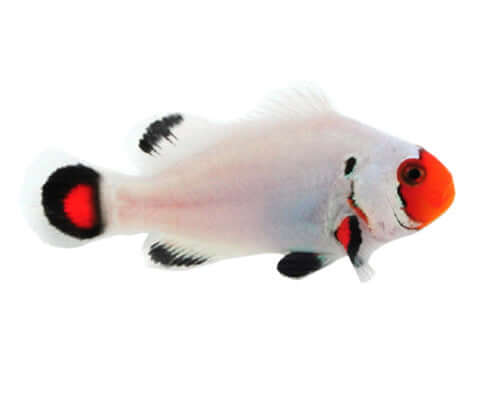| SA Wyoming White (Captive Bred) |
| CARE LEVEL | TEMPERAMENT | DIET | REEF SAFE |
| Easy | Peaceful | Omnivore | Yes |
| PURCHASE SIZE | MAX SIZE | ORIGIN | TANK SIZE |
| 1" | 3-4" | Captive-Bred | 20g |
| SG | TEMPERATURE | dKH | pH |
| 1.020-1.025 | 72-78F | 8-12 | 8.1-8.4 |
|
Only after passing a minimum four week quarantine and a five point inspection for overall health, appetite, coloration, energy and demeanor will the best, most healthy specimens be taken to the Salty Lagoon holding system! These fish are guaranteed to be among the most healthy available for sale online. So much so that any purchases from this category are backed by a Live-Arrival 7 Day Guarantee! View Marine Fish Compatibility Chart Ocellaris Clownfish, members of the Pomacentridae family, are also known as Common Clownfish. The color pattern of these beautiful fish with their orange body striped with white bands, outlined in black - instantly brings dear, little Nemo to mind.* Clownfish are a Reefchaser favorite with the wobbly way they navigate through the water, making them a popular choice among beginners and veterans of the hobby. Common Clownfish can grow to 3-4 inches in length. Like many other fish species, the females are larger than the males. The Common clownfish is very similar in appearance to the Percula clownfish, of the same genus. The "easiest" way to distinguish between the two species is to look for these 4 notable differences:
The diet should consist of varied vitamin enriched meaty foods along with various algae and plankton. A large portion of a clownfish diet in the wild consists of Marine Phytoplankton, which makes an excellent live feed for all of your Fish, Corals and other invertebrates. |
|
For more information about this species and more visit our Marine Fish Care Blog.
|

